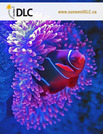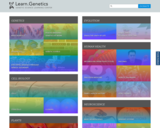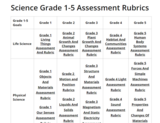
Three videos explaining Meiosis.
- Subject:
- Biology
- Author:
- Distance Learning Centre
- Date Added:
- 04/11/2018

Three videos explaining Meiosis.

"The Core Knowledge Foundation provides open access to content-rich curriculum materials for preschool through grade 8, including the Core Knowledge Curriculum Series™, with many materials now available and many more in development."
You will need to provide your email address to download these amazing resources. CK has aligned their ELA to the Science of Reading in collaboration with Amplify Reading.
*Full Units
*Books for Students
*Teaching Materials
*Scope & Sequence

Wow. This site is amazing and full of anything you need to teach about genetics.
Including:
*basic genetics
*evolution
*cell biology
*plants
*human health
*neuroscience
*ecology
*science tools
Be sure to select "View Teach.Genetics for Classroom Materials" in the top right corner as well.

The following file contains the assets (or resources) to accompany the Sask DLC Grade 9 Science. Please note that this is not the content of the course, but the assets used to support and deliver it. The files are organized in a zipped folder. You can download it and extract the files. Links are also provided to other materials like videos and other suggested resources.

This site helps students see how plants and animals interact to accomplish pollination. Students (Grades 3-8) identify plant and animal parts involved in pollination, connections between pollination and food production, relationships between pollinators and the plants they pollinate, and ways flowers have adapted to encourage pollination.

Congratulations! You have just graduated from a Master’s program in Genetic Counseling, one of the
most prestigious degree in Canada! You have been hired to work as part of a team of 4 genetic
counselors. As part of a new and rapidly changing field of work, you know that this will naturally come
with a bit of research. Your task is to research the area of your specialty.

Science assessment rubrics for every grade from Grade 1-9, for each unit.

Students discuss several human reproductive technologies available today pregnancy ultrasound, amniocentesis, in-vitro fertilization and labor anesthetics. They learn how each technology works, and that these are ways engineers have worked to improve the health of expecting mothers and babies.

Student teams learn about and devise technical presentations on four reproductive technology topics pregnancy ultrasound, amniocentesis, in-vitro fertilization or labor anesthetics. Each team acts as a panel of engineers asked to make a presentation to a group of students unfamiliar with the reproductive technology. Each group incorporates non-lecture elements into its presentation for greater effectiveness. As students learn about the technologies, by creating a presentation and listening to other groups' presentations, they also learn more about the valuable skill of technical communications.